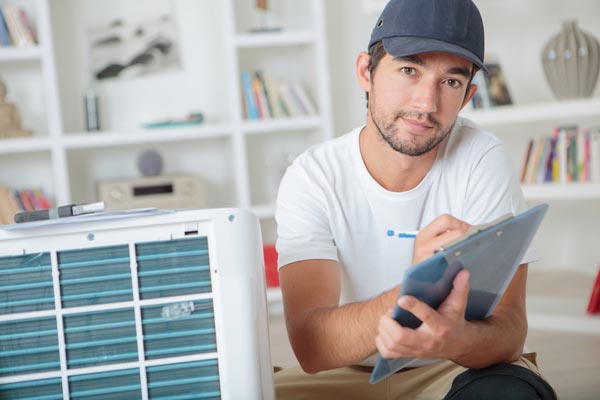Five HVAC Maintenance Preparation Steps Between Heating and Cooling
There is a short season in early spring when the weather is near perfect: sunny skies, warm breezes, and low humidity allow for the windows and doors to be opened to let in the fresh air. But most years, that idyllic period is too short. Some years we seem to transition from winter to summer with no spring at all.
Spring is the perfect time to prepare your HVAC system for a long cooling season.
- Service your system during a period when it can be out of service for a few hours with effecting comfort.
- Service your system when HVAC Maintenance professionals have room in their schedule.
- Service your system during the transition between the heating and cooling season.
Here are five important HVAC Maintenance steps to prepare your system for air conditioner use.
1 Become familiar with your air conditioning system. It consists of four important components:
-
- The AC compressor is located outdoors. As the name implies, its job is to compress refrigerant gas for the cooling cycle. Compressing gas generates significant heat, so as long as the compressor is running a fan is moving air to keep the system from overheating.
- The condenser is located indoors and looks similar to a car radiator. The pressure on the refrigerant gas is released into the condenser, resulting in a rapid cooling cycle. Warm air from the house moves across the condenser coils, cooling the air and collecting heat from the house. A new cycle pushes the warm gas outside to be compressed again for the next cycle.The cool condenser coils also remove humidity from the air; it condenses on the coils like the condensation on the sides of a cool drink. It then drops onto a tray and is drained away.
2 The blower motor is also located indoors. It moves air across the condenser coils and circulates it throughout the house. Often, the blower motor has a variable speed to compensate for heavy cooling needs.
3 The air filter is also located indoors. You will locate the air filter between the central air unit and the return air duct. The air filter removes airborne particles during each cycle, cleaning the air before it is circulated.
4 Caring for interior AC structures.
-
- The thermostat is the control or switch for the air conditioner. Usually, the thermostat can be located on an interior wall. Sensors inside the thermostat measure the temperature at the location and begin a cooling cycle when the temperature rises above the set threshold.
- Make sure both supply and return vents remain uncovered. Supply vents are on the floor and return vents are usually on the upper part of a wall. Vents are essential to the circulation of air; make sure that drapes or furniture do not impede the flow of air.
- Clean the condenser drain line. Dust and debris can accumulate on the condensation drain pan. If this debris builds up, it can clog the drain line and leak water, creating a mess and possibly causing damage.
- Make sure to clean the air filter quarterly. Accumulated dust can restrict airflow and put stress on the AC components.
5 Caring for Exterior AC Structures
-
- Inspect the outdoor compressor unit. It is essential that the compressor unit dissipate heat quickly; if the compressor overheats, it will quickly fail. Dirt and debris will clog the cooling fins, while leaves and limbs can damage the cooling fan. Make sure to keep the compressor clean.
- Inspect the refrigerant lines for damage. Replacing the gas is expensive.
After you have done your part by completing general cleaning and maintenance, it is time to call your HVAC Maintenance professional for a thorough preventative maintenance visit. The Department of Energy and every HVAC system manufacturer highly recommend an annual preventative maintenance visit by an HVAC Maintenance professional.
With the proper training and equipment, a professional can clean interior chambers—dust and dirt are the enemies of your system. The visit will also include testing of essential electrical components for efficiency and a pressure test for the closed refrigerant gas system. The average homeowner is not prepared to complete these tasks. Spring is a very good time to schedule such a visit.
Have HVAC Maintenance Questions for Spring?
Call us for information regarding HVAC Maintenance for your home. Call Doctor Cool & Professor Heat today at 281-338-8751 or email Doctor Cool and let our professional HVAC Maintenance technicians get your AC system ready for Spring.


